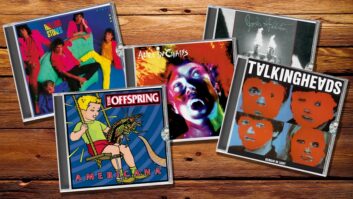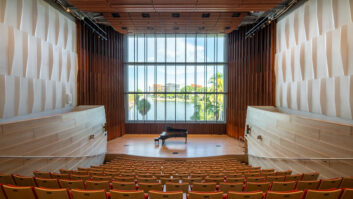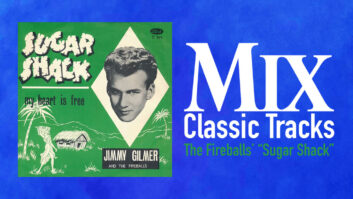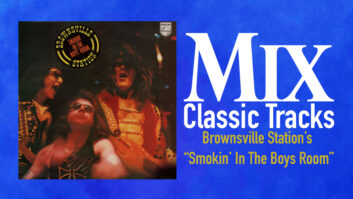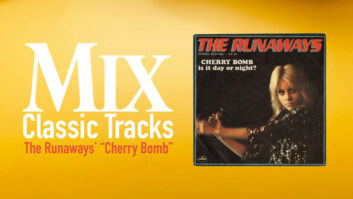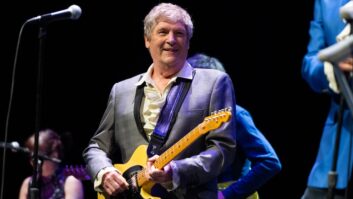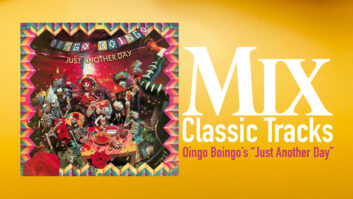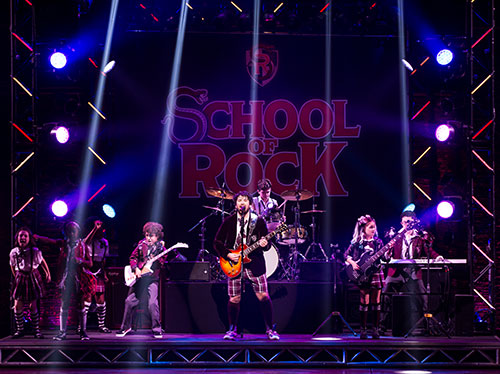
When School of Rock—The Musical opened last fall, critics seemed surprised that Andrew Lloyd Webber—he of the elite billion-dollar-grossing Broadway club—had transformed the little Richard Linklater-Jack Black movie into a family-friendly Broadway musical.
But it’s true. And the show’s odd multigenerational appeal is encapsulated when a tiny, pigtailed ‘tween girl in a private-school uniform steps downstage, boldly playing a big rock bass. Already, there’s cheerful, cheeky fun in the air. But when young actress Evie Dolan makes a pouty-lipped, tough-rocker bass face, she instantly captivates the huge theater…and nearly steals the show.
“Family audiences should be grateful for a show that only wants to have fun, and hopes you do, too,” raved The New York Times. Family audiences have indeed made School of Rock a long-running smash.
You likely know the story: Dewey (Alex Brightman), an impoverished, paunchy rocker dropped by his band for slovenly showboating, impersonates his roommate to get a substitute-teaching job at a stuffy private school. He has no teaching experience and doesn’t impress the worldly-wise little kids one bit. The situation looks hopeless, until he hears them playing stiff, serious music.
“Why did nobody tell me you could play music? I thought you all were a bunch of little douchebags!” Dewey exclaims, in his wildly inappropriate but charming way.

Photo: Matthew Murphy
So he secretly transforms the kids into a rock band, aiming for a $20,000 contest prize. They don’t win, but Dewey redeems himself, transforms the kids’ regimented lives and brings them closer to dysfunctional but loving parents—all with the power of rock ’n’ roll.
Notably, the show starts with a pre-recorded announcement from Lloyd Webber saying they are constantly asked if the children are really playing live; they are rocking totally live, he states most emphatically.
However, School of Rock is not strictly a rock musical; it is actually three musicals in one, says sound designer Mick Potter (The Phantom of the Opera, Les Miserables). “A lot of the show is a rock musical and the rest is quite a conventional theatrical musical,” Potter explains, noting that the last 20 minutes are full-on encore-level hard rock.
Plus, it’s Andrew Lloyd Webber (Cats, Phantom of the Opera), and the famed composer/impresario is very much about a natural sound image; the sound should seem to emanate from the stage, notes associate sound designer Adam Fisher.
So School of Rock has to work as a rock musical, a loud hard-rock concert and a natural-sounding, seemingly acoustic Broadway musical.
To rock hard and loud in the Winter Garden Theater, a large, exceptionally wide house, Potter started with a serious rock speaker system and worked backward, adjusting for the less-intense show styles.
“In general, speakers don’t sound great when they’re working too hard,” Potter says. “So we put in a rock system—a big Meyer Sound LYON linear line array, which is designed more for arenas than theaters.” Twelve big speakers were hung on each side of the proscenium, just like in rock. But a rock arena system is quite different from a musical theater rig. That’s where the show’s DiGiCo SD7T console earns its stripes.

The sound design had to have a different tone in the classroom before exploding onstage with a big rock sound. Photo: Matthew Murphy
“We did a lot of programming on the console to shape the system so it works for all three sound styles,” Potter explains. “We’re fully using the DiGiCo’s matrixes, outputs and flexibility for controlling equalization dynamics and delay times. It is much more than a mixing console, taking on a great deal of automated multibank compression and dynamic EQ. We maxed out all 256 processing channels, sometimes robbing Peter to pay Paul. A lot of the work was subtle compression and EQ to shape vocals and the overall system. Rock vocals are highly compressed; the book material [dialog] and Broadway-style songs, of course, we made much more natural.”
For example, when we first see the stuffy private school, the children sing the Horace Green Alma Mater and it is “just kids singing in schoolroom, a natural sound underscored with organs,” says Potter. “So we treat it like Broadway, delaying vocals to the acoustic sources—the actors—and adjusting EQ and compression so they sound as natural and uncompressed as possible.”
At the other extreme, especially at the hard-rocking Battle of the Bands at the end, with singers 100 percent transitioned from their RF boom mics to handhelds, the sound is heavily compressed and EQ’d, to sound like a rock concert. In between, there are the key story-point rock numbers, “Stick It to the Man” and “You’re in the Band.” “These need to feel like rock songs, but we’re still in classroom, developing the band and the characters and balancing between rock and musical theater.”
“So we’re going from completely natural,” with the kids singing the school song, “and then we get somewhat bigger,” with more compression and EQ as the score turns to Broadway and then rock, says Potter.
Another key challenge was to make some form of rock-level sound actually come from the stage, adds associate Fisher. “We have electronic V-drums onstage and no real amps, so that there are no significant uncontrollable band sounds there.”

Katie (Evie Dolan), the bass player, steals the show and sets the family-friendly mood. Photo: Joan Marcus
The guitar amps onstage are all props, hollowed-out cases with a Meyer Sound UP Junior inside to provide a bit of stage imaging and foldback. But they are mainly for rock ’n’ roll verisimilitude—to give the ‘tween actors the performance-boosting sense that their guitar sound is really coming from the amp. To create some major stage imaging for the house, back scenery walls in the classroom hide six Meyer Sound UP Juniors in clusters of two, feeding just drum sounds. The scenery’s wood paneling is actually gauze, Fisher explains.
While there is much fake audio gear onstage (including prop backline tech, with cool-looking lights), a bit of actual working audio tech is seen everywhere, throughout. The entire cast of 24 wears quite noticeable skin-colored boom mics, off-the-shelf DPA d:fine 4066s.
This evolved during the show’s workshop process. The team’s first challenge was to get children’s smaller voices out over rock music, with plenty of room to spare. “They had to be able to act and so not be straining, and also give us enough gain. So the kids had to be on ear-mounted RF booms,” rather than Broadway-musical-style hidden head mics, Potter explains.
“We could’ve had some cast members on head mics. However, Andrew [Lloyd Webber] and director Lawrence Connor decided it would be better if the booms were the look of the show for the whole cast, rather than just for the kids.”
The booms are mics only, without foldback earbuds, except for the onstage guitarist and drummer; they both have one earbud for click track. Foldback is extensive, however, given that the eight-member pit orchestra is in a purpose-built room-within-a-room studio under the stage. Fisher notes that about 30 speakers are onstage, with the main blast coming from 16 d&b E5s in 4×4 clusters, hidden in the stage deck grid.
All monitor mixes for the onstage rock band are programmed and cued from FOH, with different settings for Kids Classroom, Audition and Battle of Bands, etc.
For the pit orchestra, an unmanned DiGiCo SD10 console backstage feeds Roland M-48 Live Personal Mixers, one per player, enabling a custom personal micro monitor mix for each.
Out front, to fill the wide Winter Garden Theater, more mains were needed in addition to the LYON system. So Potter hung four “legacy, low mid-range boxes” Meyer Sound DS-4P mid-bass speakers, at both sides of the main arrays, aimed across the width of the house.
And even that wasn’t enough, so Potter took a Meyer Sound MINA Compact Curvilinear array and hung it high and horizontally, as a center cluster to add “huge wide coverage,” he notes. In all there are 209 house speakers in the 1,500-seat theater, counting delays, fills and surround.
“We were trying to get a balance between a live vibe and not sounding not too much like a studio CD,” Potter adds. “However, working with musicians of Broadway caliber, who are so good, it is tough to make it too raw! But I think we ended up with a good balance.”
